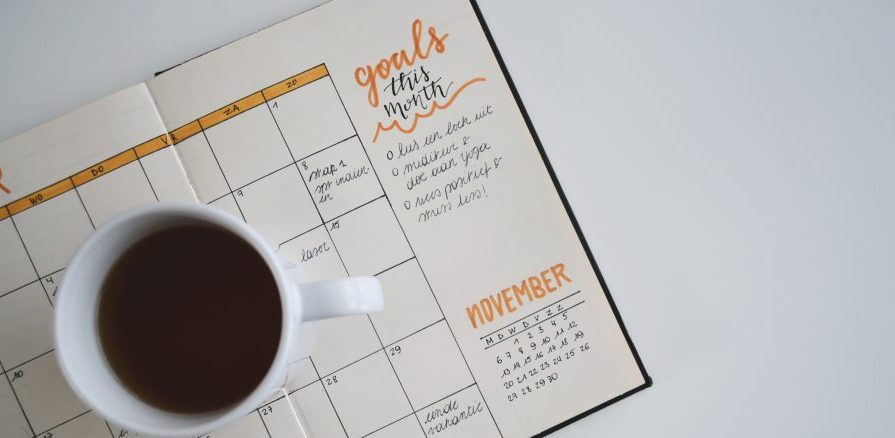 This is the seventh post in a series about planning your best year. Earlier posts focused on goal setting and scheduling time on your calendar. For more information on those posts, see the links at the end.
This is the seventh post in a series about planning your best year. Earlier posts focused on goal setting and scheduling time on your calendar. For more information on those posts, see the links at the end.
I have a confession to make: I have missed appointments in the past, even though they were written in my planner. The problem: I wasn’t looking at my planner when I should have been.
It’s one reason I can’t plan digitally. I can’t see it in front of me often enough for the system to work. So, I stick with paper and employ a few visual cues to keep me on track.
Do you struggle with this? If you think better visually, maybe one or two will work for you.
Use a Wall Calendar
I mention the use of a yearly wall calendar in this post on yearly planning. Not only is it a great visual device for laying out an entire year’s schedule, it’s a fantastic clue to visual types who need constant reminders that something is going on. If you don’t have enough room on the wall for a yearly calendar, try three months at a time.
Prop Up Your Planner
Do you plan meticulously in your planner, but still fail to keep appointments? Maybe your planner is getting “lost” on your desk. This might be the trick for you: Prop it up. Use a book stand or something similar to keep your planner upright. Like posting your calendar on the wall, it’s a nice visual reminder of everything you’ve got going on.
Use Colored Paper for To-Do Lists
If you use white paper to write your to-do list, it may be getting lost in the shuffle of other things on your desk — even if it’s literally on the top of your desk! A switch to another color may be all the visual stimulus you need to keep things on track. Even a simple switch from white paper to a yellow legal pad could be enough.
Use Colored Sticky Notes for Your Top Three Objectives
Instead of writing your top 3 daily objectives on your to do list, try putting them on three colored sticky notes. The notes could be stuck on the wall, on the edge of your monitor, or on your propped-up planner—wherever they will offer the most encouragement and visual cue. And once you’ve finished an objective, tear it off and throw it away!
Use Index Cards for Your Top Three Objectives
Index cards work similar to sticky notes, with the added benefit of not being sticky. They offer a visual cue, come in exciting colors, and have room to jot a few notes if you need them (or write your goal really large if you want to). They’re also satisfactorily auditory if you want to rip them in two once your goal has been completed!
Index cards are also terrific for recurring goals. Write out a set of cards with tasks that are repeated daily, weekly or monthly and keep them in your desk drawer: host Monday roundtable, call vendor, complete TPS report, etc. Pull out only the cards you need on a given day and slide them back into the drawer with the task is complete.
I hope at least one of these tricks will give your planning a boost. Do you employ other visual cues in your planning? Please share them in the comments.
If you enjoyed this post, you may be interested in others in the series:
- 5 Reasons to Plan for the New Year
- Planning Your Year, Part 1: How to Plan a Productive Day
- Planning Your Perfect Year Part 2: The Nuts and Bolts
- Planning Your Perfect Year, Part 3: The Weekly Plan
- Planning Your Perfect Year, Part 4: Keeping the Momentum Going and Staying Productive with Weekly Reviews
And related:
- 3 “Deadline” Techniques to Trick Your Brain to Work More Effectively
- New Year’s Resolutions in the Workplace
Kelly Harmon is a GovLoop Featured Contributor. By day, she is the Webmaster of the National Agricultural Library, where she spends her time analyzing web statistics, supporting the various NAL web sites, and writing the occasional article for Tellus Magazine, produced by the Agricultural Research Service, USDA. By night, she is an award-winning journalist and author, and a member of the Science Fiction & Fantasy Writers of America and the Horror Writers Association. She’s a bit of a word-nerd, and relies on her planner to keep life sane. You can read her posts here.





I am so visually dependent, thanks for sharing! I’ve already started propping up my planner in the interim of getting a wall calendar!!
Hi Pearl! You’re welcome! I’m so glad this was helpful for you.